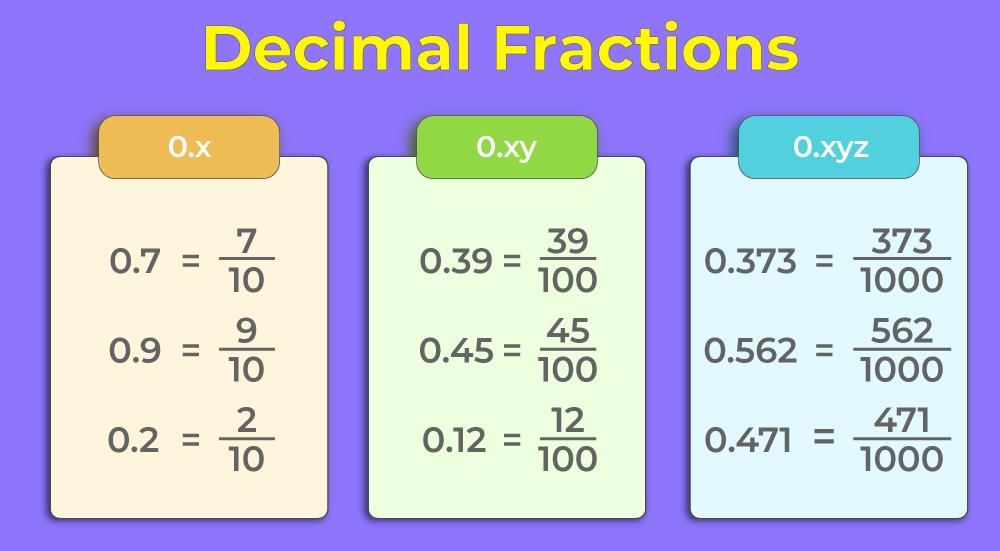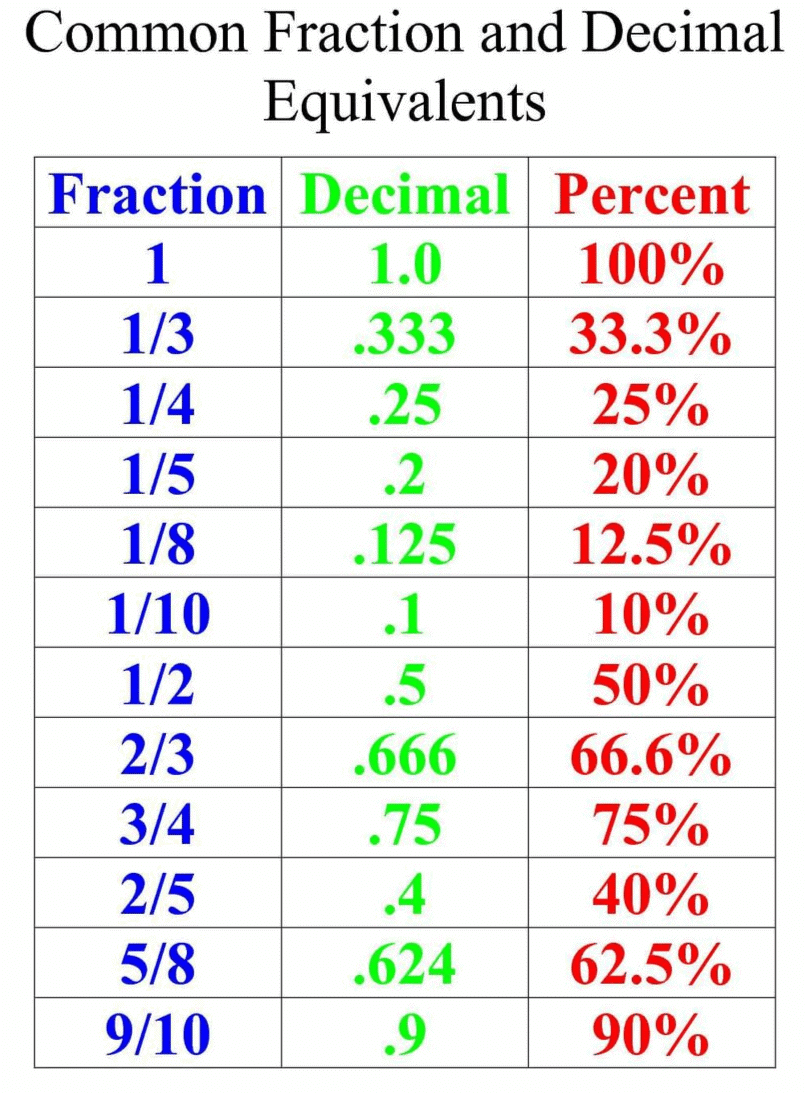Decimal Fractions: Notes and Important Formulas | Quantitative Aptitude for SSC CGL PDF Download
| Table of contents |

|
| What Are Decimal Fractions? |

|
| Place Value in Decimal Fractions |

|
| Converting Decimals to Vulgar Fractions |

|
| Operations on Decimal Fractions |

|
| Practice Questions on Decimal Fractions |

|
A decimal is a number that includes a whole part and a fractional part, separated by a decimal point. It is based on the base-10 system, where each place value represents a power of 10.
A decimal fraction is a type of decimal where the fraction’s denominator is a power of 10 (such as 10, 100, or 1000) but is written using a decimal point instead of a fraction bar.
For example:
0.5 (which is the same as 5/10)
3.75 (which is the same as 375/100)
Decimals and decimal fractions are widely used in measurements, money, and everyday calculations.

Let's explore decimal fractions in detail.
What Are Decimal Fractions?
A decimal fraction is a fraction expressed in the base-10 number system, where the denominator is a power of 10, such as 10, 100, 1000, etc.
They are written using a decimal point, which separates the whole number part from the fractional part.
Examples
0.1 = 1/10 (one-tenth)
0.25 = 25/100 (twenty-five hundredths)
0.008 = 8/1000 (eight thousandths)
1.75 = 1 + 75/100 (mixed number)
EduRev Tip: Always be ready to convert between decimals and fractions—this is frequently tested in Exam.

Place Value in Decimal Fractions
Each digit to the right of the decimal point has a place value:
 Example
Example
0.473
- 4 = tenths
- 7 = hundredths
- 3 = thousandths
Converting Decimals to Vulgar Fractions
To convert a decimal into a vulgar fraction:
- Put 1 in the denominator under the decimal point and add zeros equal to the number of decimal places.

- Annexing Zeros and Removing Decimal Signs:
- Annexing zeros to the right of a decimal fraction doesn't change its value. For example, 0.8 = 0.80 =0.800.
- When the numerator and denominator have the same number of decimal places, the decimal point can be removed.

 |
Download the notes
Decimal Fractions: Notes and Important Formulas
|
Download as PDF |
Operations on Decimal Fractions
Addition and Subtraction: Align decimals and perform as usual.
- Example: 5.9632+0.073=6.0362
Multiplication: Multiply without the decimal point, then place the decimal in the product according to the total decimal places.
- Example: 0.2×0.02×0.002=0.000008
Division: Divide as normal and place the decimal in the quotient corresponding to the decimal places in the dividend.
- Example: 0.0204÷17=0.0012
Recurring Decimals: If figures or sets of figures repeat indefinitely, it's a recurring decimal.
- Example: 0.333...=0.3, 3.142857142857...=3.142857
Pure Recurring Decimal: All figures after the decimal point repeat. Mixed Recurring Decimal: Some figures repeat while others don't.
Mixed Recurring Decimal: Some figures repeat while others don't.
- Example: 0.173333...=0.173
Decimal fractions are essential in mathematics for precise representation of values less than one. They're used in everyday calculations, finance, science, and more. Understanding their conversion, operations, and recurring nature is crucial for mastering mathematical concepts and applications.
Practice Questions on Decimal Fractions
Question 1: What is the product of 0.003 and 0.4?
Answer: 0.003 × 0.4 = 0.0012
Multiply as if there were no decimals:
3 × 4 = 12.Count the decimal places:
0.003 has 3 decimal places.
0.4 has 1 decimal place. Total decimal places = 3 + 1 = 4.
Place the decimal in the product:
12 → 0.0012.
Question 2: Convert 0.173333... to a fraction.
Answer: 0.173333... = 13/75
Let x = 0.173333...
Multiply both sides by 10:
10x = 1.73333...Subtract the original equation from the new equation:
10x - x = 1.73333... - 0.17333...
9x = 1.56
⇒ x = 1.56/9 = 156/900 = 13/75.
Question 3: What is the product of 0.003 and 0.4?
Answer: 0.003 × 0.4 = 0.0012
Multiply as if there were no decimals:
3 × 4 = 12.Count the decimal places:
0.003 has 3 decimal places.
0.4 has 1 decimal place. Total decimal places = 3 + 1 = 4.
Place the decimal in the product:
12 → 0.0012.
Question 4: What is 3.257 + 4.836?
Align the decimals and add:
Answer: 8.093
Question 5:
What is 9.462 - 3.218?
Align the decimals and subtract:
Answer: 6.244
|
315 videos|182 docs|185 tests
|
FAQs on Decimal Fractions: Notes and Important Formulas - Quantitative Aptitude for SSC CGL
| 1. What are decimal fractions? |  |
| 2. How do you convert a decimal fraction to a common fraction? |  |
| 3. What are some important formulas related to decimal fractions? |  |
| 4. How do you compare decimal fractions? |  |
| 5. How do you round decimal fractions to a certain place value? |  |























